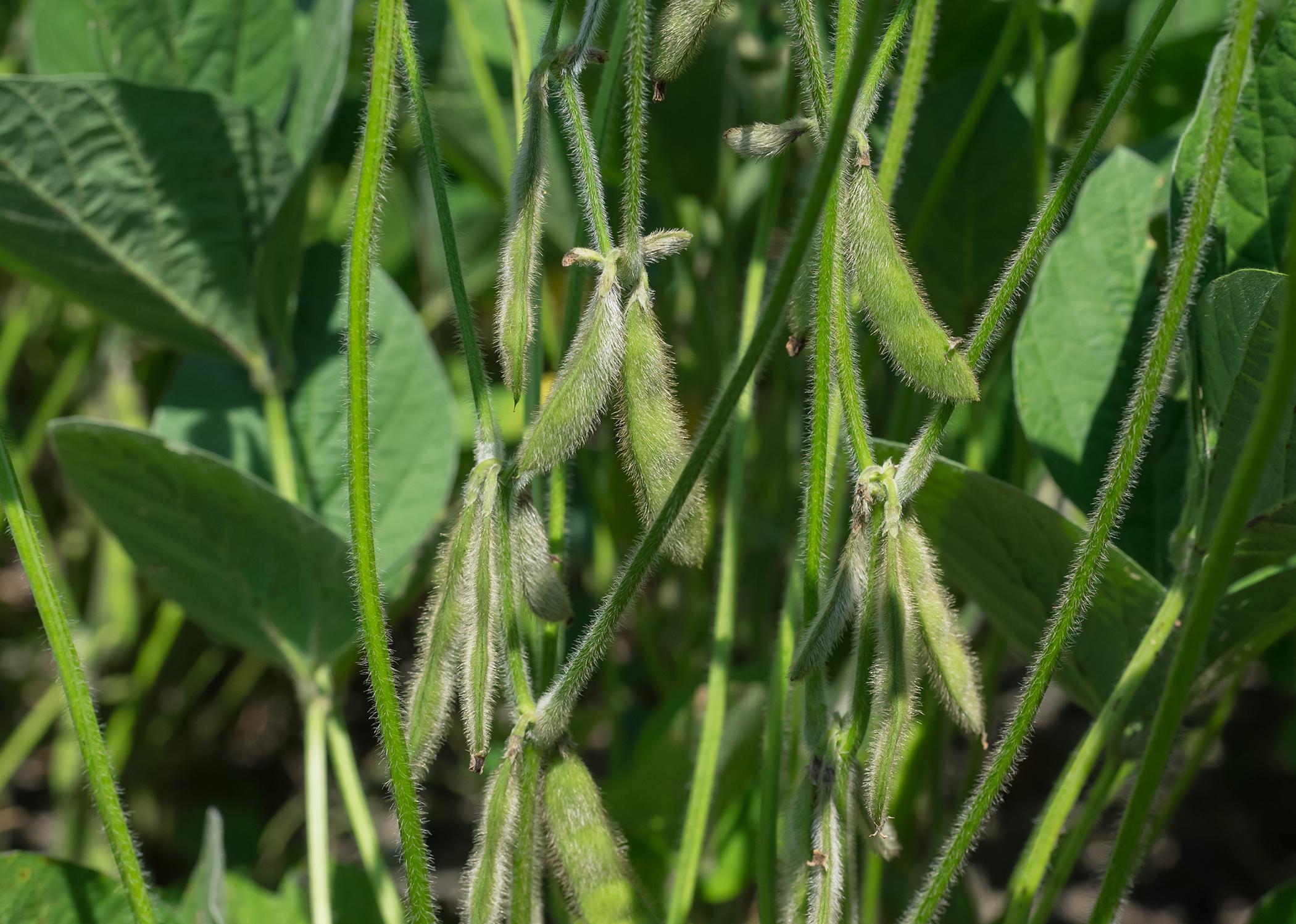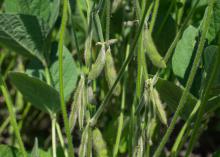Information Possibly Outdated
The information presented on this page was originally released on August 1, 2022. It may not be outdated, but please search our site for more current information. If you plan to quote or reference this information in a publication, please check with the Extension specialist or author before proceeding.
Soybean crop quality, prices navigate volatility
STARKVILLE, Miss. -- The condition of Mississippi’s soybean crop in early August literally depends on where you stand.
“We have some really good-looking irrigated soybeans that were planted in the optimum planting window and have made it to this point of the season with very few issues, other than extreme heat,” said Trent Irby, soybean specialist with the Mississippi State University Extension Service. “We even have some nonirrigated soybeans that could fall into that same description after catching several timely rains.
“Change to a different location,” he added, “and we have some irrigated soybeans that are way behind because of not being able to be planted early due to wet conditions and some nonirrigated soybeans that haven’t caught a rain in weeks.”
The U.S. Department of Agriculture reports 2.3 million acres planted of the state’s most prodigious crop, up 80,000 acres from 2021. The USDA’s weekly crop progress report from July 24 graded 73% of the state’s soybean crop as either fair or good, but it graded 18% as poor or worse. The remaining 9% was in excellent condition.
Extreme heat and extended stretches of drought through much of June and July may affect yields.
“The crop cannot be as efficient in either vegetative or reproductive development when daytime and nighttime temperatures stay high. That’s not to say that we won’t have some solid yields in places, but there will likely be some level of impact to overall yield potential that came from the extra heat this season,” Irby said. “Couple the heat with drought, and there could be major yield impacts in those areas.”
Irby said heavy spring rains in areas and recent persistent heat coupled with limited, sporadic rainfall kept growers from planting even more acres.
“Portions of the state remained too wet to get anything done until the drought hit in June. Then it went from too wet to too dry to plant in a short period of time,” he said. “Of the acres that did shift from other crops, the likely factor was input prices in that crop. Some acres shifted out of corn and into soybean because of high nitrogen fertilizer costs.”
The USDA’s weekly crop progress report estimates 94% of the state’s soybean crop has bloomed, with 81% setting pods. Of the eight soybean reproductive stages, full flowering is known as “R2,” while setting pods is the fourth stage, or “R4.” Irby said most of the state’s acres range from R4 to R6, or full pod.
“We have a limited number of acres beyond R6 that will be ready to harvest soon. We also have a number of late-planted beans that were planted late either due to wet spring weather or planted behind harvested wheat, with these ranging from barely out of the ground up to R2,” he said. “We always need timely rain in those fields where we don’t have irrigation capability to finish filling pods, but also, we need good harvest conditions to avoid quality issues and get the crop out in a timely manner.”
The industry continues to see high volatility in soybean prices as the growing season progresses. November soybean futures averaged $13.37 for the week ending July 24, down 18% from the contract high of $15.82 for the week ending June 9.
“Current prices are 7% higher than where we started the year, but they are 3% lower than a year ago,” said MSU Extension agricultural economist Will Maples. “We have seen a November contract high that was 8% higher than the one reached in 2021. This fact displays the price volatility in the market in which higher highs and lower lows are experienced.
“The market downturn soybeans have experienced over the last two months, also experienced by most other commodities, has largely been influenced by the overall economic downturn and talk of recession,” he added. “Given the current economic conditions, we have likely already seen the price high for the November contract.”
In the July World Agricultural Supply and Demand Estimates report, USDA indicates soybean supplies for 2022 at 4.5 billion bushels, 135 million bushels higher than 2021.
“There is strong demand for U.S. soybeans from both the international export market and domestic crushing,” Maples said. “China remains a major buyer of U.S. soybeans. Domestically, the increased demand for soybean oil used in biofuel production is resulting in strong soybean crushing demand.
“Ending stocks for 2022 are currently projected at 230 million bushels, which is considered a price supportive level,” he said.





